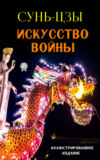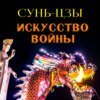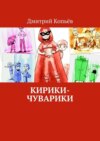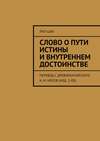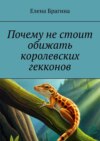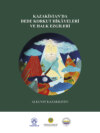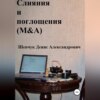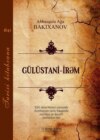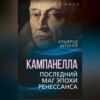Читать книгу: «The Intention Experiment: Use Your Thoughts to Change the World», страница 2
While PEAR concentrated on the effect of mind on inanimate objects and processes, many other scientists experimented with the effect of intention on living things. A diverse number of researchers demonstrated that human intention can affect an enormous variety of living systems: bacteria, yeast, algae, lice, chicks, mice, gerbils, rats, cats and dogs.12 A number of these experiments have also been carried out with human targets; intention has been shown to affect many biological processes within the receiver, including gross motor movements and those in the heart, the eye, the brain and the respiratory system.
Animals themselves proved capable of acts of effective intention. In one ingenious study by René Peoc’h of the Fondation ODIER in Nantes, France, a robotic ‘mother hen’, constructed from a moveable random-event generator, was ‘imprinted’ on a group of baby chicks soon after birth. The robot was placed outside the chicks’ cage, where it moved around freely, as its path was tracked and recorded. Eventually, it was clear that the robot was moving towards the chicks two and a half times more often than it would ordinarily; the ‘inferred intention’ of the chicks – their desire to be close to their mother – appeared to affect the robot, drawing it closer to the cage. In over 80 similar studies, in which a lighted candle was placed on a movable REG, baby chicks kept in the dark, finding the light comforting, managed to influence the robot to spend more time than normal in the vicinity of their cage.13
The largest and most persuasive body of research has been amassed by William Braud, a psychologist and the research director of the Mind Science Foundation in San Antonio, Texas, and, later, the Institute of Transpersonal Psychology. Braud and his colleagues demonstrated that human thoughts can affect the direction in which fish swim, the movement of other animals such as gerbils, and the breakdown of cells in the laboratory.14
Braud also designed some of the earliest well-controlled studies of mental influence on human beings. In one group of studies, Braud demonstrated that one person could affect the autonomic nervous system (or fight-or-flight mechanisms) of another.15 Electrodermal activity (EDA) is a measure of skin resistance and shows an individual’s state of stress; a change of EDA usually occurs if someone is stressed or made uncomfortable in some way.16 Braud’s signature study tested the effect on EDA of being stared at, one of the simplest means of isolating the effect of remote influence on a human being. He repeatedly demonstrated that people were subconsciously aroused while they were being stared at.17
Perhaps the most frequently studied area of remote influence concerns remote healing. Some 150 studies, of variable scientific rigour, have been carried out,18 and one of the best designed was conducted by the late Dr Elisabeth Targ. During the height of the AIDS epidemic in the 1980s, she devised an ingenious, highly controlled pair of studies, in which some 40 remote healers across America were shown to improve the health of terminal AIDS patients, even though the healers had never met or been in contact with their patients.19
Even some of the most rudimentary mind-over-matter experiments have had tantalizing results. One of the first such studies involved attempts to influence a throw of the dice. To date, some 73 studies have examined the efforts of 2500 people to influence more than two and a half million throws of the dice, with extraordinary success. When all the studies were analysed together, and allowances made for quality or selective reporting, the odds of the results occurring by chance alone were 1076 (1 followed by 76 zeros) to one.20
There was also some provocative material about spoon bending, that perennial party trick made popular by psychic Uri Geller. John Hasted, a professor at Birkbeck College at the University of London, had tested this with an ingenious experiment involving children. Hasted suspended latch keys from the ceiling and placed the children 3 to 10 feet away from their target key, so that they could have no physical contact. Attached to each key was a strain gauge, which would detect and register on a strip chart recorder any change in the key. Hasted then asked the children to try to bend the suspended metal. During the sessions, he observed not only the keys swaying and sometimes fracturing, but also abrupt and enormous spikes of voltage pulses up to 10 volts – the very limits of the chart recorder. Even more compelling, when children had been asked to send their intention to several keys hung separately, the individual strain recorders noted simultaneous signals, as though the keys were being affected in concert.21
Most intriguing, in much of the research on psychokinesis, mental influence of any variety had produced measurable effects, no matter how far the distance between the sender or what point in time he generated his intention. According to the experimental evidence, the power of thought transcended time and space.
By the time these revisionists were finished, they had torn up the rule book and scattered it to the four winds. Mind in some way appeared to be inextricably connected to matter and, indeed, was capable of altering it. Physical matter could be influenced, even irrevocably altered, not simply by force, but through the simple act of formulating a thought.
Nevertheless, the evidence from these frontier scientists left three fundamental questions unanswered. Through what physical mechanisms do thoughts affect reality? At the time of this writing, some highly publicized studies of mass prayer showed no effect. Were certain conditions and preparatory states of mind more conducive to success than others? How much power did a thought have, for good or ill? How much of our lives could a thought actually change?
Most of the initial discoveries about consciousness occurred more than 30 years ago. More recent discoveries in frontier quantum physics and in laboratories around the globe offer answers to some of those questions. They provide evidence that our world is highly malleable, open to constant subtle influence. Recent research demonstrates that living things are constant transmitters and receivers of measurable energy. New models of consciousness portray it as an entity capable of trespassing physical boundaries of every description.
Intention appears to be something akin to a tuning fork, causing the tuning forks of other things in the universe to resonate at the same frequency.
The latest studies of the effect of mind on matter suggest that intention has variable effects that depend on the state of the host, and the time and the place where it originates. Intention has already been employed in many quarters to cure illness, alter physical processes and influence events. It is not a special gift but a learned skill, readily taught. Indeed, we already use intention in many aspects of our daily lives.
A body of research also suggests that the power of an intention multiplies, depending upon how many people are thinking the same thought at the same time.22
The Intention Experiment consists of three aspects. The main body of the book (chapters 1–12) attempts to synthesize all the experimental evidence that exists on intention into a coherent scientific theory of how intention works, how it can be used in your life and which conditions optimize its effect.
The second portion of the book (chapter 13) offers a blueprint for using intention effectively in your own life through a series of exercises and recommendations for how best to ‘power up’. This portion is also an exercise in frontier science. I am not an expert in human potential, so this is not a self-help manual, but a journey of discovery for me as well as you. I have extrapolated this programme from scientific evidence describing those circumstances that created the most positive results in psychokinetic laboratory experiences. We know for certain that these techniques have generated success under controlled experimental laboratory conditions, but I cannot guarantee they will work in your life. By making use of them, you will, in effect, engage in an ongoing personal experiment.
The final section of the book (chapters 14 and 15) consists of a series of personal and group experiments. Chapter 14 outlines a series of informal experiments on the use of intention in your own life for you to carry out individually. These mini ‘experiments’ are also intended to be pieces of research. You will have the opportunity to post your results on our website and share them with other readers.
Besides these individual experiments, I have also designed a series of large group experiments to be carried out by the readers of this book (chapter 15). With the aid of our highly experienced scientific team, The Intention Experiment will conduct periodic large-scale experiments to determine whether the focused intention of its readers has an effect on scientifically quantifiable targets.
All it requires is that you read the book, digest its contents, log on to the website (www.theintentionexperiment.com) and, after following the instructions and exercises at the back of this book, send out some highly specific thoughts, as and when described on the site. The first such studies will be carried out by the German physicist Fritz-Albert Popp, vice-president of the International Institute of Biophysics in Neuss, Germany (www.lifescientists.de), and his team of seven, psychologist Gary Schwartz and his colleagues at the University of Arizona at Tucson, and Marilyn Schlitz and Dean Radin of the Institute of Noetic Sciences.
Website experts have collaborated with our scientific team to design log-on protocols to enable us to identify which characteristics of a group or aspects of their thoughts produce the most effective results. For each intention experiment, a target will be selected – a specific living thing or a population where change caused by group intention can be measured. We have started with algae, the lowliest of subjects (see chapter 12), and, with every experiment, we will move on to an increasingly complex living target.
Our plans are ambitious: to tackle a number of societal ills. One eventual human target might be patients with a wound. It is known and accepted that wounds generally heal at a particular, quantifiable rate with a precise pattern.23 Any departure from the norm can be precisely measured and shown to be an experimental effect. In that instance, our aim would be to determine whether focused group intention will enable wounds to heal more quickly than usual.
Naturally, you don’t have to participate in our experiments. If you don’t wish to get involved, you can read about the intention experiments of others, and use some of that information to inform how you use intention in your life.
Please do not casually participate in the experiments. In order for the experiment to work properly, you must read the book and digest its contents fully beforehand. The experimental evidence suggests that those who are the most effective have trained their minds, much as athletes train their muscles, to maximize their chances of success.
In order to discourage uncommitted participation, The Intention Experiment website contains a complicated password comprising some words or ideas from the book (which will change slightly every few months). In order to be part of the experiment, you will have to log on with the password and you will have to have read the book and understood it.
The website (www.theintentionexperiment.com) has a running clock (set to US Eastern Standard Time and Greenwich Mean Time). At a particular moment on a date specified on the website, you will be asked to send a carefully worded, detailed intention, depending on the target site.
Once finished, the results of the experiments will be analysed and data-crunched by our scientific team, examined by a neutral statistician, and then published on the website and in subsequent printings of this book. The website will thus become the living sequel to the book you are holding in your hands. You simply need to consult the website periodically for announcements of the date of every experiment.
Hundreds of well-designed studies of group intention and remote mental influence have demonstrated significant results. Nevertheless, it might be the case that our experiments will not produce demon-strable, measurable effects, at first or indeed ever. As reputable scientists and objective researchers, we are duty-bound to report the data we have. As with all science, failure is instructive, helping us to refine the design of the experiments and the premises that they are based upon.
As you read this book, keep in mind that this is a work of frontier science. Science is a relentless process of self-correction. Assumptions originally considered as fact must often ultimately be discarded. Many – indeed, most – of the conclusions drawn in this book are bound to be amended or refined at a later date.
By reading this book and participating in its experiments you may well contribute to the world’s knowledge, and possibly further a paradigm shift in our understanding of how the world works. Indeed, the power of mass intention may ultimately be the force that shifts the tide towards repair and renewal of the planet. When combined with hundreds of thousands of others, your solitary voice, now one barely audible note, could transmute into a thunderous symphony.
My own motive for writing The Intention Experiment was to make a statement about the extraordinary nature and power of consciousness. It may prove true that a single collective, directed thought is all it takes to change the world.
Notes - Introduction
1. For a complete description of these scientists and their findings, consult L. McTaggart, The Field: the Quest for the Secret Force of the Universe, London: HarperCollins, 2001.
2. The full title of Newton’s major treatise is Philosophiae Naturalis Principia Mathematica, a name that offers a nod to its philosophical implications, although it is always referred to reverentially as the Principia.
3. R. P. Feynman, Six Easy Pieces: The Fundamentals of Physics Explained, London: Penguin, 1995: 24.
4. McTaggart, The Field, op. cit.
5. Eugene Wigner, the Hungarian-born American physicist who received a Nobel Prize for his contribution to the theory of quantum physics, is one of the early pioneers of the central role of consciousness in determining reality and argued, through a thought experiment called ‘Wigner’s friend’, that the observer, ‘the friend’, might collapse Schrödinger’s famous cat into a single state or, like the cat itself, remain in a state of superposition until another ‘friend’ comes into the lab. Other proponents of ‘the observer effect’ include John Eccles and Evan Harris Walker. John Wheeler is credited with espousing the theory that the universe is participatory: it only exists because we happen to be looking at it.
6. McTaggart, The Field, op. cit.
7. E. J. Squires, ‘Many views of one world – an interpretation of quantum theory’, European Journal of Physics, 1987; 8: 173.
8. B. F. Malle et al., Intentions and Intentionality: Foundations of Social Cognition, Cambridge, Mass.: MIT Press, 2001.
9. M. Schlitz, ‘Intentionality in healing: mapping the integration of body, mind, and spirit’, Alternative Therapies in Health and Medicine, 1995; 1 (5): 119–20.
10. R. G. Jahn et al., ‘Correlations of random binary sequences with prestated operator intention: a review of a 12-year program’, Journal of Scientific Exploration, 1997; 11: 345–67.
11. R. G. Jahn et al., ‘Correlations of random binary sequences’, op. cit.; Dean Radin and Roger Nelson, ‘Evidence for consciousness-related anomalies in random physical systems’, Foundations of Physics, 1989; 19 (12): 1499–514; McTaggart, The Field, op. cit.: 116–17.
12. These studies are itemized in great detail in D. Benor, Spiritual Healing, Volume 1, Southfield, Mich.: Vision Publications, 1992.
13. Rene Peoc’h, ‘Psychokinetic action of young chicks on the path of a “illuminated source”’, Journal of Scientific Exploration, 1995; 9 (2): 223; R. Peoc’h, ‘Chicken imprinting and the tychoscope: An Anpsi experiment’, Journal of the Society for Psychical Research, 1988; 55: 1; R. Peoc’h, ‘Psychokinesis experiments with human and animal subjects upon a robot moving at random’, The Journal of Parapsychology, September 1, 2002.
14. William G. Braud and Marilyn J. Schlitz, ‘Consciousness interactions with remote biological systems: anomalous intentionality effects’, Subtle Energies and Energy Medicine, 1991; 2 (1): 1–27; McTaggart, The Field, op. cit.: 128–9.
15. Marilyn Schlitz and William Braud, ‘Distant intentionality and healing: assessing the evidence’, Alternative Therapies in Health and Medicine, 1997; 3 (6): 62–73.
16. William Braud and Marilyn Schlitz, ‘A methodology for the objective study of transpersonal imagery’, Journal of Scientific Exploration, 1989; 3 (1): 43–63.
17. W. Braud et al., ‘Further studies of autonomic detection of remote staring: replication, new control procedures and personality correlates’, Journal of Parapsychology, 1993; 57: 391–409; M. Schlitz and S. LaBerge, ‘Autonomic detection of remote observation; two conceptual replications’, in D. Bierman (ed.), Proceedings of Presented Papers: 37 Annual Parapsychological Association Convention, Amsterdam, Fairhaven, Mass.: Parapsychological Association, 1994: 465–78.
18. D. Benor, Spiritual Healing: Scientific Validation of a Healing Revolution, Southfield, Mich.: Vision Publications, 2001.
19. F. Sicher, E. Targ et al., ‘A randomized double-blind study of the effect of distant healing in a population with advanced AIDS: report of a small scale study’, Western Journal of Medicine, 1998; 168 (6): 356–63. For a full description of the studies, see McTaggart, The Field, op. cit.: 181–96.
20. Psychologist Dean Radin conducted a meta-analysis in 1989 at Princeton University of all known dice experiments (73) published between 1930 and 1989. They are recounted in his book Entangled Minds, New York: Paraview, 2006: 148–51.
21. J. Hasted, The Metal Benders, London: Routledge & Kegan Paul, 1981, as cited in W. Tiller, Science and Human Transformation; Subtle Energies, Intentionality and Consciousness, Walnut Creek, Calif.: Pavior Publications, 1997: 13.
22. McTaggart, The Field, op. cit.: 199.
23. W. W. Monafo and M. A. West, ‘Current recommendations for topical burn therapy’, Drugs, 1990; 40: 364–73.
PART ONE
The Science of Intention
A human being is part of the whole, called by us
‘universe’, a part limited in time and space. He
experiences himself, his thoughts and feelings as
something separated from the rest – a kind of
optical delusion of his consciousness.
Albert Einstein
CHAPTER ONE
Mutable Matter
FEW PLACES IN THE GALAXY are as cold as the helium-dilution refrigerator in Tom Rosenbaum’s lab. Temperatures in the refrigerator – a boiler-sized circular apparatus with a number of cylinders – can descend to a few thousandths of a degree above absolute zero, almost 273°C below freezing – three thousand times colder than the farthest reaches of outer space. For two days, liquid nitrogen and helium circulate around the refrigerator, and then three pumps constantly blasting out gaseous helium take the temperature down to the final rung. Without heat of any description, the atoms in matter slow to a crawl. At this scale of coldness, the universe would grind to a halt. It is the scientific equivalent of hell freezing over.
Absolute zero is the preferred temperature of a physicist like Tom Rosenbaum. At 47, as a distinguished professor of physics at the University of Chicago and former head of the James Franck Institute, Rosenbaum was in the vanguard of experimental physicists who liked exploring the limits of disorder in condensed-matter physics, the study of the inner workings of liquids and solids when their underlying order was disturbed.1 In physics, if you want to find out how something behaves, the best way is simply to make it uncomfortable and then see what happens. Creating disorder usually involves adding heat or applying a magnetic field to determine how it will react when disturbed and also to determine which spin position – or magnetic orientation – the atoms will choose.
Most of his colleagues in condensed-matter physics remained interested in symmetrical systems such as crystalline solids, whose atoms are arranged in orderly array, like eggs in a carton, but Rosenbaum was drawn to strange systems that were inherently disordered – to which more conventional quantum physicists referred disparagingly as ‘dirt’. In dirt, he believed, lay exposed the unprobed secrets of the quantum universe, uncharted territory that he was happy to navigate. He loved the challenge posed by spin glasses, strange hybrids of crystals, with magnetic properties, technically considered slow-moving liquids. Unlike a crystal, whose atoms point in the same direction in perfect alignment, the tiny magnets associated with the atoms of a spin glass are wayward and frozen in disarray.
The use of extreme coldness allowed Rosenbaum to slow down the atoms of these strange compounds enough to observe them minutely, and to tease out their quantum mechanical essence. At temperatures near to absolute zero, when their atoms are nearly stationary, they begin taking on new collective properties. Rosenbaum was fascinated by the recent discovery that systems disorderly at room temperature display a conformist streak once they are cooled down. For once, these delinquent atoms begin to act in concert.
Examining how molecules behave as a group in various circumstances is highly instructive about the essential nature of matter. In my own journey of discovery, Rosenbaum’s laboratory seemed the most appropriate place to begin. There, at those lowest temperatures where everything occurs in slow motion, the true nature of the most basic constituents of the universe might be revealed. I was looking for evidence of ways in which the components of our physical universe, which we think of as fully realized, are capable of being fundamentally altered. I also wondered whether it could be shown that quantum behaviour like the observer effect occurs outside the subatomic world, in the world of the everyday. What Rosenbaum had discovered in his refrigerator might offer some vital clues as to how every object or organism in the physical world, which classical physics depicts as an irreversible fact, a finalized assemblage only changeable by the brute force of Newtonian physics, could be affected and ultimately altered by the energy of a thought.
According to the second law of thermodynamics, all physical processes in the universe can only flow from a state of greater to lesser energy. We throw a stone into a river and the ripple it makes eventually stops. A cup of hot coffee left standing can only grow cold. Things inevitably fall apart; everything travels in a single direction, from order to disorder.
But this might not always be inevitable, Rosenbaum believed. Recent discoveries about disordered systems suggested that certain materials, under certain circumstances, might counteract the laws of entropy and come together rather than fall apart. Was it possible that matter could go in the opposite direction, from disorder to greater order?
For ten years Rosenbaum and his students at the James Franck Institute had been asking that question of a small chunk of lithium holmium fluoride salt. Inside Rosenbaum’s refrigerator lay a perfect chip of rose-coloured crystal, no bigger than the head of a pencil, wrapped in two sets of copper coils. Over the years, after many experiments with spin glasses, Rosenbaum had grown very fond of these dazzling little specimens, one of the most naturally magnetic substances on earth. This characteristic presented the perfect situation in which to study disorder, but only after he had altered the crystal beyond recognition into a disordered substance.
He had first instructed the laboratory that grew the crystals to combine the holmium with fluorine and lithium, the first metal on the periodic table. The resulting lithium holmium fluoride salt was compliant and predictable – a highly ordered substance whose atoms behaved like a sea of microscopic compasses all pointing north. Rosenbaum then had wreaked havoc on the original salt compound, instructing the lab to rip out a number of the atoms of holmium, bit by bit, and replace them with yttrium, a silvery metal without such natural magnetic attraction, until he was left with a strange hybrid of a compound: a salt called lithium holmium yttrium tetrafluoride.
By virtually eliminating the magnetic properties of the compound, Rosenbaum eventually had created spin-glass anarchy – the atoms of this Frankenstein monstrosity pointing any way they liked. Being able to manipulate the essential property of elements like holmium by creating weird new compounds so cavalierly was a little like having ultimate control over matter itself. With these new spin-glass compounds, Rosenbaum could virtually change the properties of the compound at will; he could make the atoms orientate in a particular direction, or freeze them in some random pattern.
Nevertheless, his omnipotence had a limit. Rosenbaum’s holmium compounds behaved themselves in some regards, but not in others. One thing he could not do was to get them to obey the laws of temperature. No matter how cold Rosenbaum made his refrigerator, the atoms inside them resisted any sort of ordered orientation, like an army refusing to march in step. If Rosenbaum was playing God with his spin glasses, the crystal was Adam, stubbornly refusing to obey His most fundamental law.
Sharing Rosenbaum’s curiosity about the strange property of the crystal compound was a young student called Sayantani Ghosh, one of his star PhD candidates. Sai, as her friends called her, a native of India, had graduated with a first-class honours degree from Cambridge, after which she had chosen Tom’s lab for her doctoral programme in 1999. Almost immediately, she had distinguished herself by winning the Gregor Wentzel Prize, given each year by the University of Chicago’s physics department to the best first-year graduate student teaching assistant. The slight 23-year-old, who at first glance appeared abashed, hiding behind her copious dark hair, had soon impressed her peers and teachers alike with her bold authority, a rarity among science students, and her ability to translate complex ideas to the level an undergraduate could comprehend. Sai shared the distinction of winning the coveted prize with only one other woman since its inception 25 years before.
According to the laws of classical physics, applying a magnetic field will disrupt the magnetic alignment of a substance’s atoms. The degree to which this happens is the salt’s ‘magnetic susceptibility’. The usual pattern with a disordered substance is that it will respond to the magnetic field for a time and then plateau and tail off, as the temperature drops or the magnetic field reaches a point of magnetic saturation. The atoms will no longer be able to flip in the same direction as that of the magnetic field and so will begin to slow down.
In Sai’s first experiments, the atoms in the lithium holmium yttrium salt, as predicted, grew wildly excited with the application of the magnetic field. But then, as Sai increased the field, something strange began to happen. The more she turned up the frequency, the faster the atoms continued to flip over. What is more, all the atoms, which had been in a state of disarray, began pointing in the same direction and operating as a collective whole. Then, small clusters of about 260 atoms aligned, forming ‘oscillators’, spinning collectively in one direction or another. No matter how strong the magnetic field that Sai applied, the atoms remained stubbornly aligned with each other, acting in concert. This self-organization persisted for 10 seconds.
At first, Sai and Rosenbaum thought these effects might have something to do with the strange effects of the remaining atoms of holmium, known to be one of the very few substances in the world with such long-range internal forces that in some quarters it was described and worked out mathematically as something existing in another dimension.2 Although they didn’t understand the phenomenon they had observed, they wrote up their results, which were published in the journal Science in 2002.3
Rosenbaum decided to carry out another experiment to attempt to isolate the property in the crystal’s essential nature that had enabled it to override such strong outside influences. He left the study’s design to his bright young graduate student, suggesting only that she create a computerized three-dimensional mathematical simulation of the experiment she had intended to carry out. In experiments of this nature on such tiny matter, physicists must rely on a computerized simulation to confirm mathematically the reactions they are witnessing experimentally.
Sai spent months developing the computer code and building her simulation. The plan was to find out a bit more about the salt’s magnetic capability, by applying two systems of disorder to the crystal chip: higher temperatures and a stronger magnetic field.


